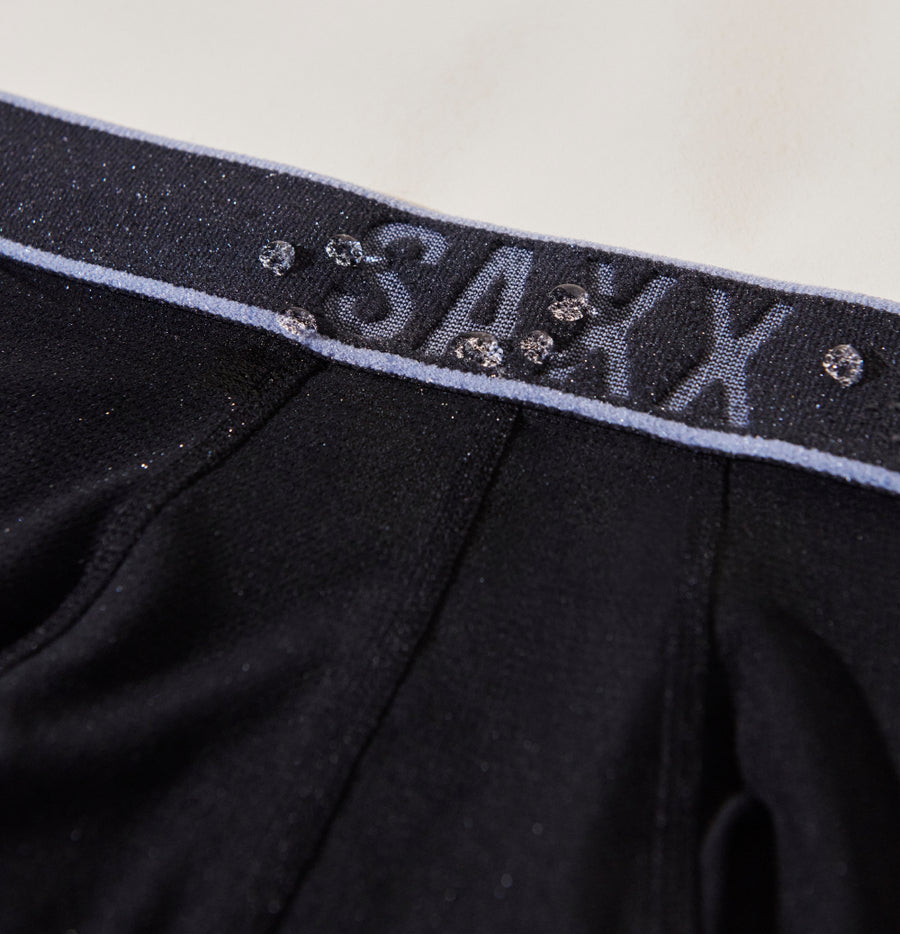Introduction
The fit of bras is an essential aspect to ensure both comfort, support and health.
An ill-fitting bra can cause various problems such as back pain, skin irritation, breasts that seem out of place or feelings of constant discomfort.
To ensure a pleasant and supportive experience, it is crucial to find the right bra size for your body type. In this guide to fitting bras, Romeo and Juliet take you step by step to help you find the perfect bra.
Take measurements correctly
It's important to take accurate measurements to determine the best bra size for you. In this section, we'll walk you through the measurement steps, with a focus on measuring underbust and cup size.
We'll explain how to use a tape measure appropriately and how to interpret the measurements obtained to find your ideal bra size.
The importance of measuring regularly
When it comes to fitting a bra correctly, taking regular measurements of your breasts is crucial. Measurements may fluctuate over time due to various factors such as weight fluctuations, hormonal changes, pregnancy, breastfeeding, etc. Measuring regularly will help ensure that you are wearing the correct bra size at all times. Here's why regular measurement is so important:
Breast size changes
Your breast size may change over time. For example, if you lose or gain weight, your breasts may shrink or enlarge. Additionally, hormonal fluctuations during the menstrual cycle can also affect the size and shape of your breasts. By measuring regularly, you can ensure that you always have a bra that fits your bust perfectly.
Optimal comfort and support
An ill-fitting bra can cause discomfort, pain and irritation. Slipping straps, too tight a band or cups that are too small can be extremely annoying. By taking measurements regularly, you can ensure that you choose the bra size that provides the optimal comfort and support you need.
Prevention of health problems
An ill-fitting bra can lead to long-term health issues. A bra that's too tight can restrict blood flow, cause back and shoulder pain, and contribute to the development of issues such as poor posture and muscle tension. By measuring regularly and wearing a well-fitting bra, you can avoid these problems and maintain good breast health.
Self-confidence
Wearing a bra that fits you well can have a positive impact on your self-confidence. When you feel comfortable and supported, you have better posture, feel more confident in your clothes, and can focus on your daily activities without worrying about your bra. Regular measuring allows you to maintain that confidence by always wearing the right bra.
In summary, regularly measuring your breasts is essential to ensure the best fit for your bra. This will allow you to maintain your comfort, health and self-confidence. Take the time to measure regularly and adjust your bra size accordingly to fully experience all the benefits that a well-fitting bra can offer.
The tape measure: your best ally
When it comes to taking precise measurements to find the right bra size, the measuring tape is your essential tool. It is a simple yet powerful instrument that allows you to accurately measure different parts of your chest.
-
How to measure underbust size
- Wrap the ribbon just below the chest
- Make sure the tape is snug and horizontal
- Write down the measurement in centimeters
-
How to measure cup size
- Wrap the tape around the fullest part of your chest
- Keep the tape horizontal and do not overtighten
- Write down the measurement in centimeters
-
Interpretation of measurements and determination of size
- Subtract the underbust measurement from the cup measurement
- Use a conversion chart to find the corresponding bra size
Signs of an ill-fitting bra
Learning to identify the signs of an ill-fitting bra is key to choosing the right bra. We'll show you the common signs of a poor fit, such as straps that fall off or slip, a high back, breasts that stick out of the cup, marks on the skin, and feelings of pressure or discomfort. By recognizing these signs, you'll be able to make the necessary adjustments to find a bra that's perfect for you.
-
Shoulder straps that fall or slip
- Adjust the straps to tighten them
- Check if the length of the suspenders is appropriate
- Opt for adjustable or crossed straps for better support
-
The rising back
- Try a smaller band size
- Check if the band under the bust is horizontal and adjusted
-
Breasts overflowing from the cup
- Go for a larger cup size
- Make sure the cups completely envelop the breasts
-
The bra that leaves marks on the skin
- Try a larger band size
- Check if the band is too tight and adjust it accordingly
-
The feeling of pressure or discomfort
- Check if the cup size is appropriate
- Opt for bras with stretchy and comfortable materials
Find the right bra for your body type
Each person has a unique morphology, and it is important to choose a bra adapted to the shape and size of your breasts. In this section, we will introduce you to different types of bras such as balconette, push-up, minimizer, etc., explaining their features and benefits for different body types. We'll also give you specific advice for fuller busts and smaller busts, to help you choose the bra that will best flatter your figure.
-
The different types of bras: balconette, push-up, minimizer, etc.
- Discover the features and benefits of each type of bra
- Choose based on your preference and desired effect
-
How to choose according to the shape of the breasts: round, pear, asymmetrical, etc.
- Identify the shape of your breasts
- Opt for bras that offer good support and a flattering shape
-
Good practices for generous breasts
- Choose bras with a wide band for better support
- Opt for cups with a solid structure for better hold
-
Tips for small breasts
- Choose bras with padding or push-ups to create volume
- Opt for bras with details such as ruffles or patterns to add visual volume
The perfect fit
When trying on a bra, it is essential to follow certain steps to ensure a perfect fit. We'll walk you through these steps, with a focus on checking the underbust band, making sure the cups hug the breasts properly, adjusting the straps for optimal comfort, and movement testing to verify. adjustment during different activities.
-
The steps to try on a bra
- Attach the band under the bust to the last hook
- Lean forward and tuck your breasts into the cups
- Straighten up and adjust the straps
-
Check the band under the bust
- The band should be horizontal and snug, without digging into the skin
- Try a smaller band size if it's too loose
- Use extenders if the band is too tight
-
Make sure the cups envelop the breasts well
- Cups should completely envelop the breasts without creating creases or voids
- Try a larger cup size if the breasts are overflowing
- Go for a smaller cup size if the cups are too big
-
Straps: fit and comfort
- The straps must be adjusted so as not to slip or dig into the shoulders
- Make sure they provide adequate support without being too tight
- Cross the straps if you need more support
-
Test movements to verify fit
- The bra should stay in place and provide adequate support during active movement
- Try bending, stretching and moving to check for support
Common adjustments
In this section, we'll cover common adjustments you can make to improve the comfort and fit of your bra. We'll walk you through how to tighten or loosen the straps, use underbust band extenders, adjust the position of the straps, and choose the correct cup size. These small adjustments can make a big difference in how your bra fits your body.
-
Tighten or loosen the straps
- Adjust the straps for a custom fit
- Make sure they provide adequate support without being uncomfortable
-
Use extenders for the band under the bust
- Use extenders to adjust the size of the band if it is too tight
- Make sure the tape stays horizontal and snug
-
Change the position of the straps
- Try crossing the straps for better support
- Adjust the position of the shoulder straps for optimal comfort
-
Adjust cup size
- Try a larger or smaller cup size as needed
- Make sure the cups properly wrap around the breasts without creating gaps or creases
Conclusion
A well-fitting bra is essential for your comfort, your self-confidence and your health. By following this bra fitting guide, you can find the perfect bra for you. Remember that each person is unique, and it is always recommended to consult a lingerie professional for a precise and personalized fit. By taking care to choose a bra that fits you well, you can feel comfortable and show off your figure with style and confidence.




